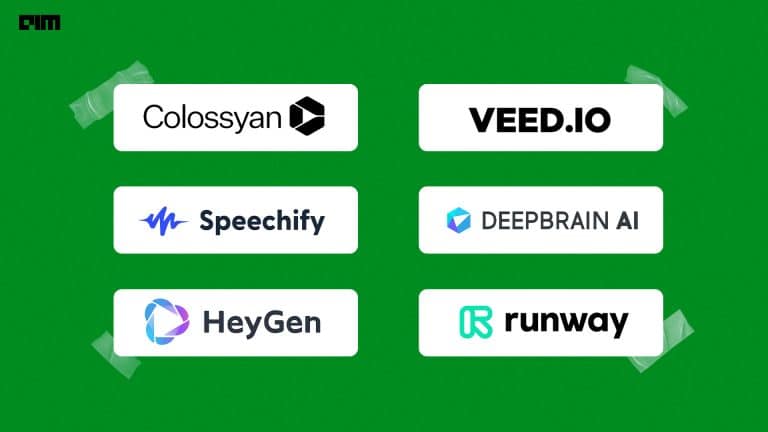A lot of companies today are burdened by legacy BI platforms and are unable to deliver the right data at the right time to their users to run their business. “Establishing a data-driven culture is at the top of mind for an organisation as they plan their growth strategies. More businesses are expected to lean towards modern BI solutions to revolutionise their analytics strategy, making it easier for more business stakeholders to act in real-time,” said Riaz Abdul Samadh, associate vice president of data engineering at Tiger Analytics, at The Data Engineering Summit 2022.
Modern BI: What is the driving force?
At the session titled “BI Modernisation”, Riaz, along with Saravanan Perumal, principal data architect in business intelligence at Tiger Analytics, went on to discuss some reasons acting as the driving force for companies to focus on building modern BI systems.
- Building a data culture through data democratisation
- Enabling real-time dashboard capabilities for in-depth and consistent analysis
- Integrated insights for easiness and quicker user adoption
- Custom application for unique business experience (business users explore on their own)
- Data-driven AI and analytics at scale
- Savings on licenses, maintenance
- Infrastructure to run legacy tools
New age trends in BI
Modernising the company’s BI solution helps to position one’s data as a competitive differentiator and value generator. Following are some of the technologies that the industry is gravitating towards.
- BI on edge – It essentially means BI embedded on edge devices to show real-time insights to the end-users based on usage data.
- Embedded analytics – End users in the customer-facing applications are looking at a solution where all the data comes to them as a single point of source, embedded into one application. There is no need for them to toggle into another application as well. This also helps them get better insights into data, and there is less dependency on external factors like IT and other aspects.
- BI on big data – These are modern BI tools with powerful services to handle petabytes of data and give data insights at ease.
- Geospatial intelligence – BI platforms and applications help users find, use and communicate location information. It has usage in various user aspects like agriculture, public safety, health care, etc.
- Automated insights – It is a data discovery method where a user does not have to be a technically strong person to understand how this data resides.
- Packaged BI and AI to BI shift – Pre-built templates for popular ERP, and CRM tools for quicker insights. BI tools using NLP and NLG to produce analytical outputs in visual, narrative and description mediums.
Embedded BI
Riaz went on to provide a more detailed explanation of some of these new trends in BI. Embedded BI involves integrating data analytics, visualisation and insights within applications more effectively. The BI systems should come with the ability to be embedded into any commercial or internal applications.
Tech considerations
- Embed BI into customer-facing apps
- Include API as a part of the solution
- Leverage the BI tool with a unified licensing model
- Embed BI into your business software without needing to log in a second time (single login)
- Build solutions to inherit the authorisation and permission to access it from the business application
- BI microservices enable scaling and easy deployment
These kinds of systems help in lowering TCO, easier adoption for non-technical users, strengthening operational intelligence and building applications faster with better user experience.
BI on big data
“Big data has been a major talking point in the last decade. Organisations, till a few years ago, had limitations in handling large volumes of data on their BI tools, impacting their ability to derive actionable insights. Modern BI tools have evolved to handle petabytes of data and give data insights at ease,” said Saravanan Perumal.
Technical considerations
An organisation should look into the following aspects while looking for BI on big data solutions.
- Data source connectivity – Modern BI tools have connectivity to various types of data sources, types (structured, semi-structured).
- Connectivity to streaming tools – Modern BI tools provide out of the box connectivity to stream (real-time and near-real-time) data.
- Efficient handling of live data – The live/direct query mechanisms can be leveraged to process huge volumes of transactional data for granular level reporting.
- Virtualisation tools – Depending on the volume and variety of data, virtualisation mechanisms can be leveraged.
Tiger’s BI framework
Saravanan went on to describe some aspects of Tiger’s BI framework.
- Tiger’s design dashboard framework and toolkit – Dashboarding Program Guide, helps in the comprehensive discovery of business requirements and in the development and deployment of impactful dashboards. This gives a jumpstart to any project that comes to Tiger. It has a repository which has wireframes, templates, context templates etc.
- Metadata extractor – It is a step to simplify and automate the process of collecting the metadata information of various reports/dashboards. It has features such as an automatic method to identify complete metadata information to capture, source connection details, source query for tables, etc.
This session was very insightful in understanding how BI solutions need to be modernised and what kind of trends we are observing now. It also provided the viewers with various BI solutions that enterprises can use to build modern, future-proof analytics solutions.
REGISTER HERE TO ACCESS THE CONTENT




















































































